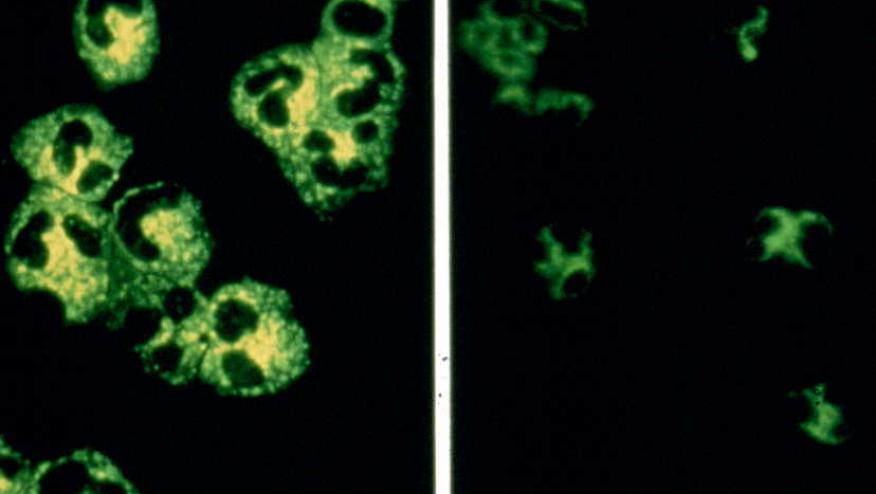Cytoplasmic Autoantibodies in the Anti-Synthetase Syndrome Save

Patients known to be autoantibody positive (e.g., anti- Jo1) for the anti-synthetase syndrome were assayed by indirect immunofluorescence (IIF) for other reactivities, showing antinuclear staining (ANA) or cytoplasmic staining (Anti-Cyt Ab+).
Control included sera from patients with scleroderma, lupus, Sjögrens, rheumatoid arthritis, and healthy subjects.
Among 202 patients who were anti-SynAb+ (Jo1, n = 122; non-Jo1, n = 80), Anti-CytAb showed high sensitivity (72%), specificity (89%), NPV (95%), and accuracy (86%), but only modest PPV (54%) for those with the anti-synthetase syndrome.
ANA positivity was less sensitive (50%) and had poor specificity (6%), PPV (9%), NPV (41%), and accuracy (12%).
Thus on ANA testing, cytoplasmic staining was significantly greater in the anti-SynAb+ patients than those who were ANA positive (72% vs 50%, p < 0.001). Interestingly 82% of ANA-negative patients in the anti-SynAb+ cohort had positive anti-CytAb.
The control groups showed mostly ANA positivity (93.5%), but were seldom anti-CytAb positive (11.5%).
Cytoplasmic staining results on routine IIF may have predictive value in identifying those with the anti-synthetase syndrome.










If you are a health practitioner, you may Login/Register to comment.
Due to the nature of these comment forums, only health practitioners are allowed to comment at this time.